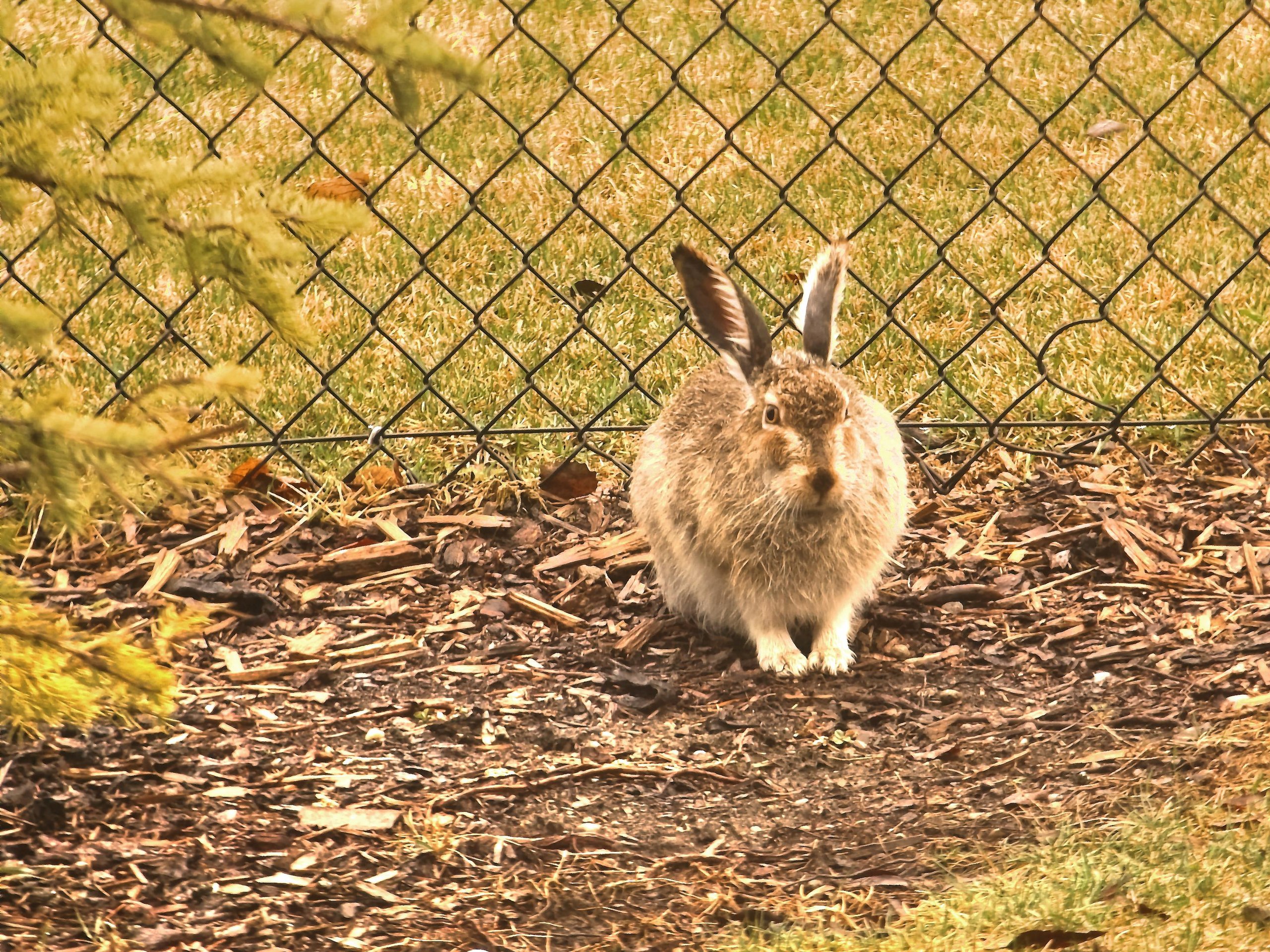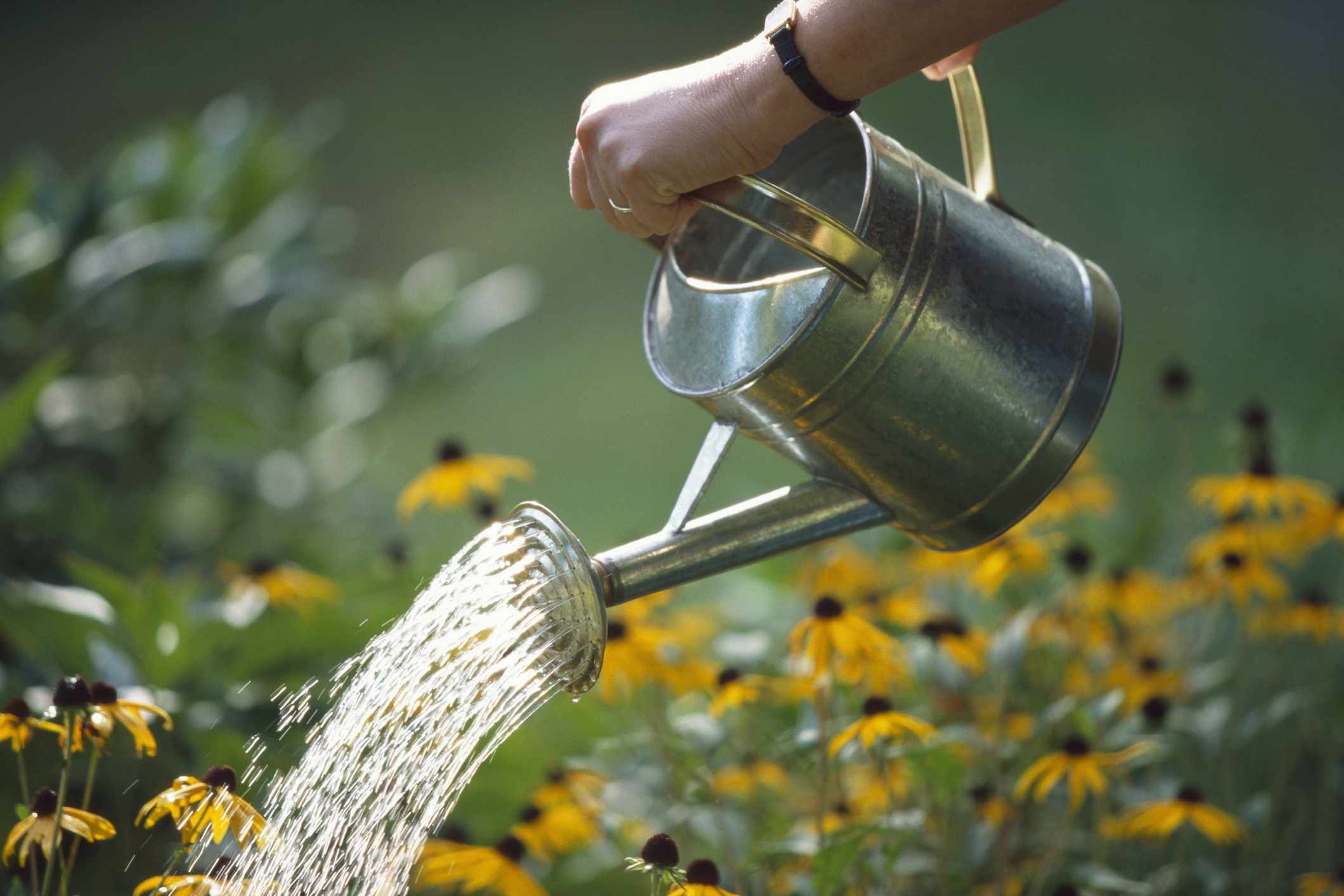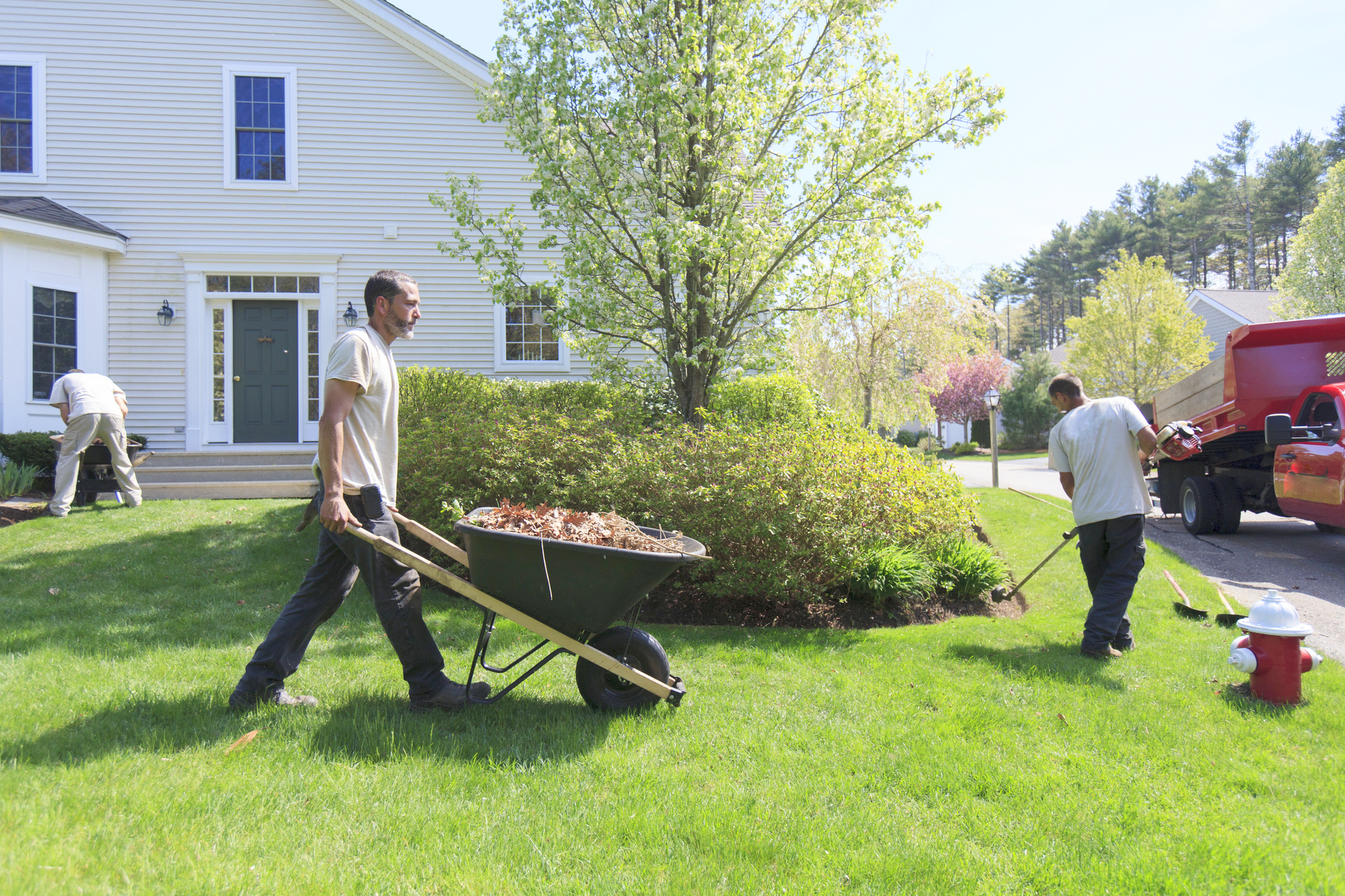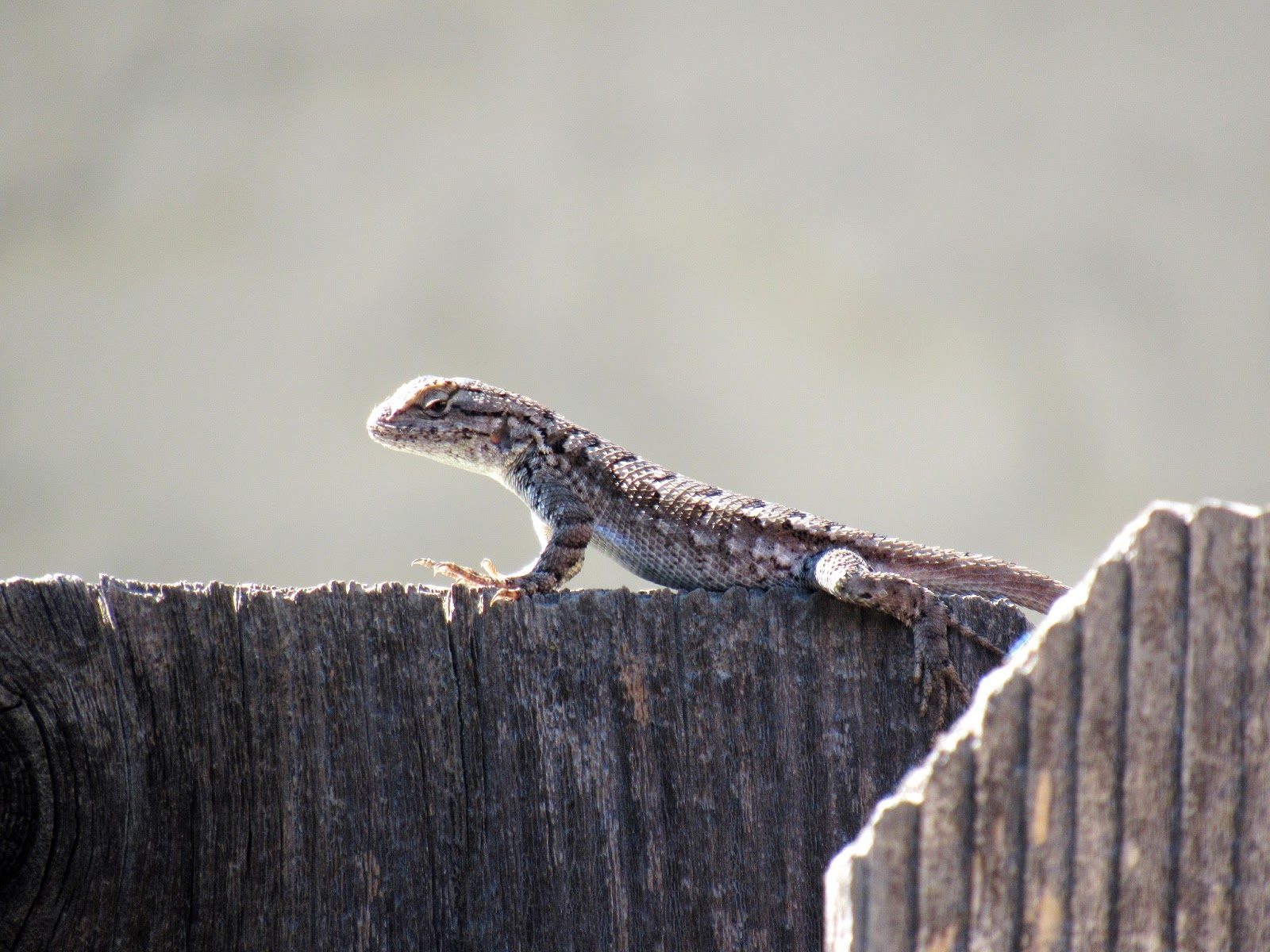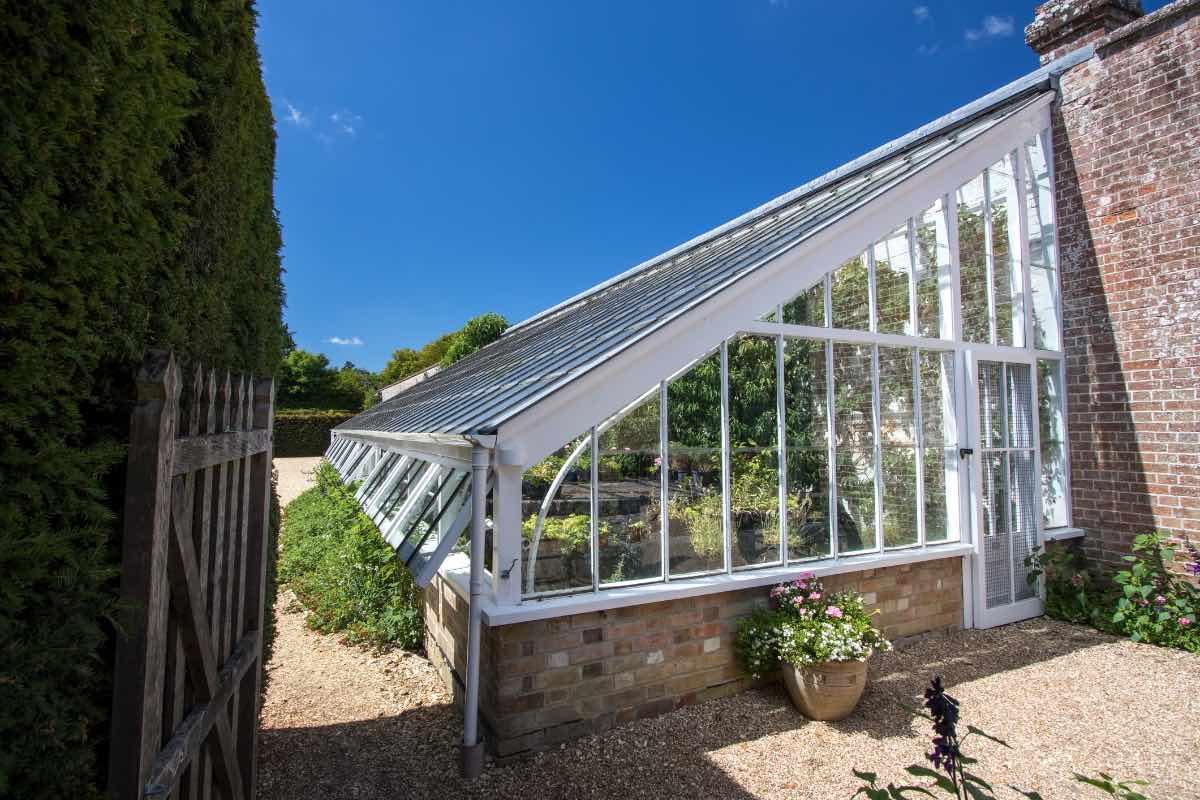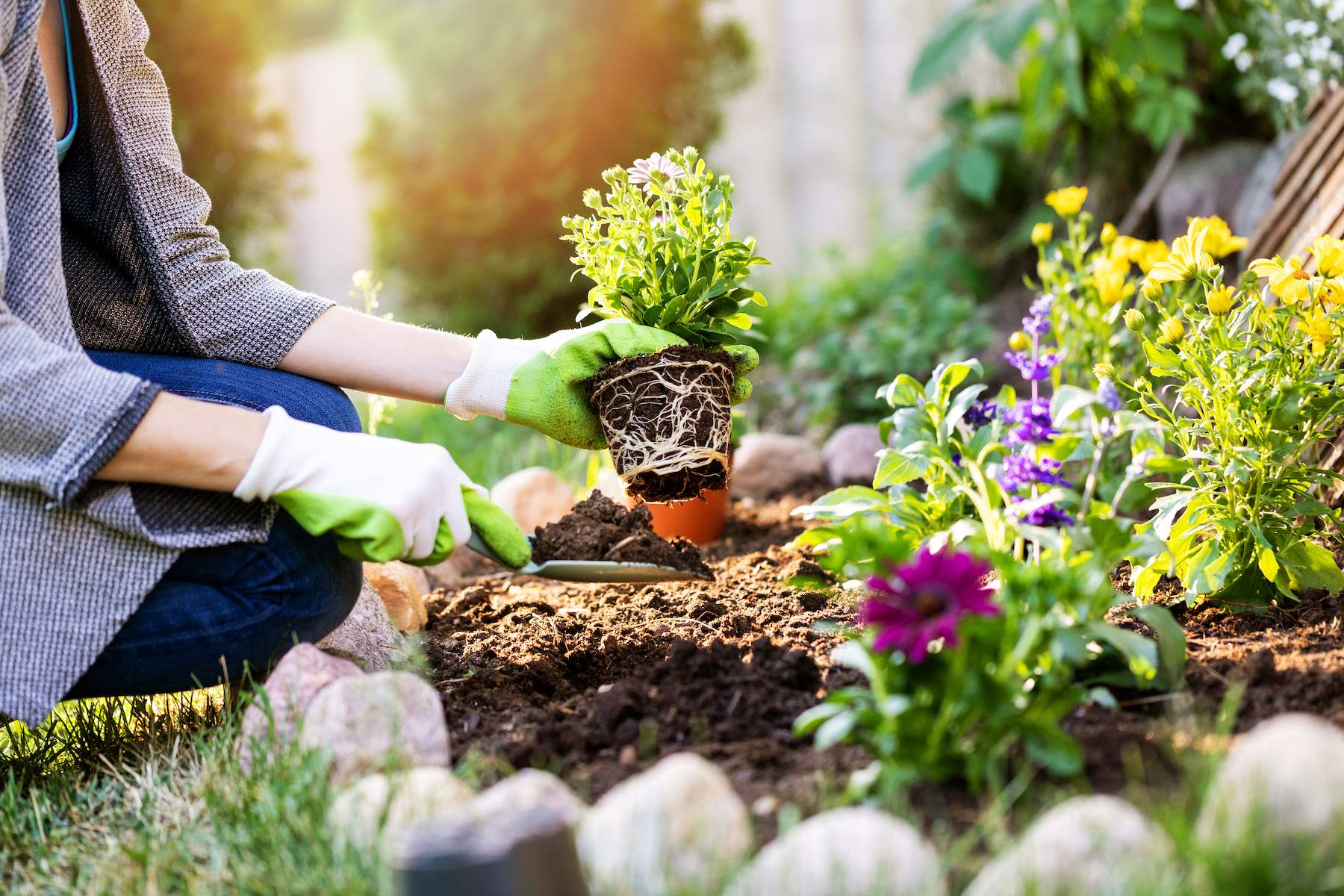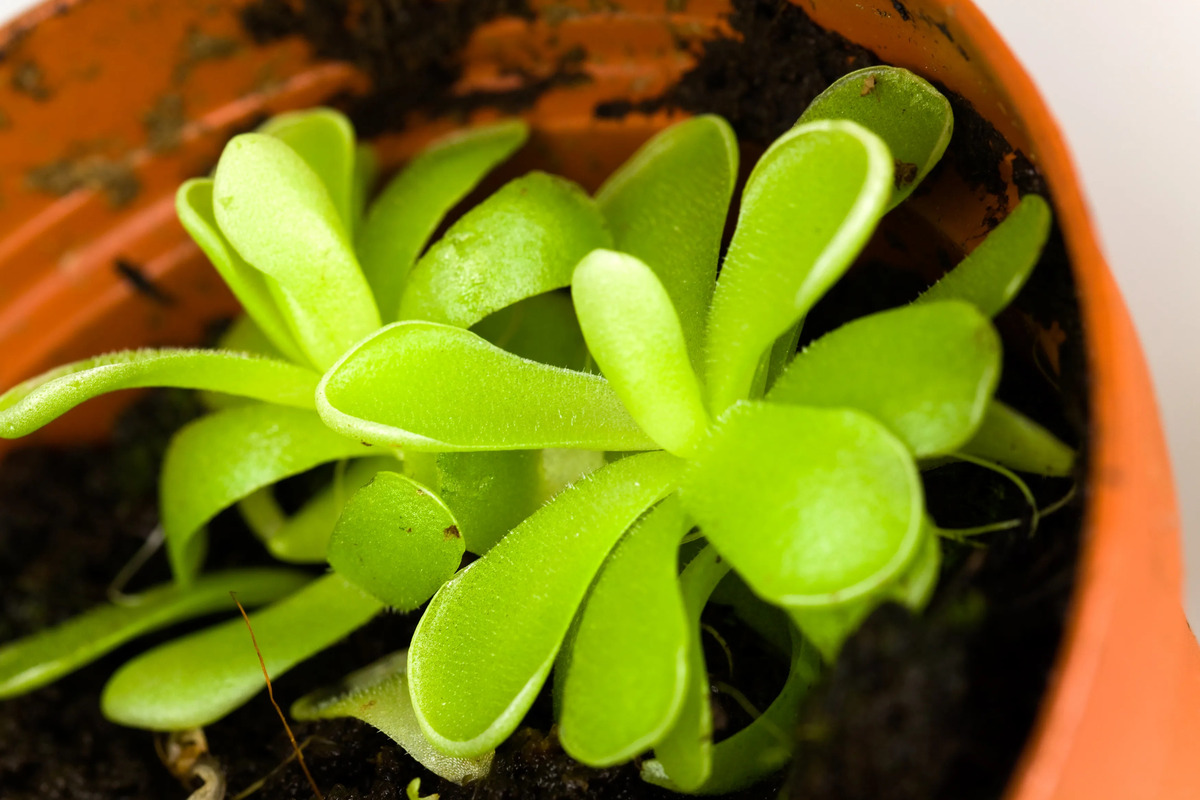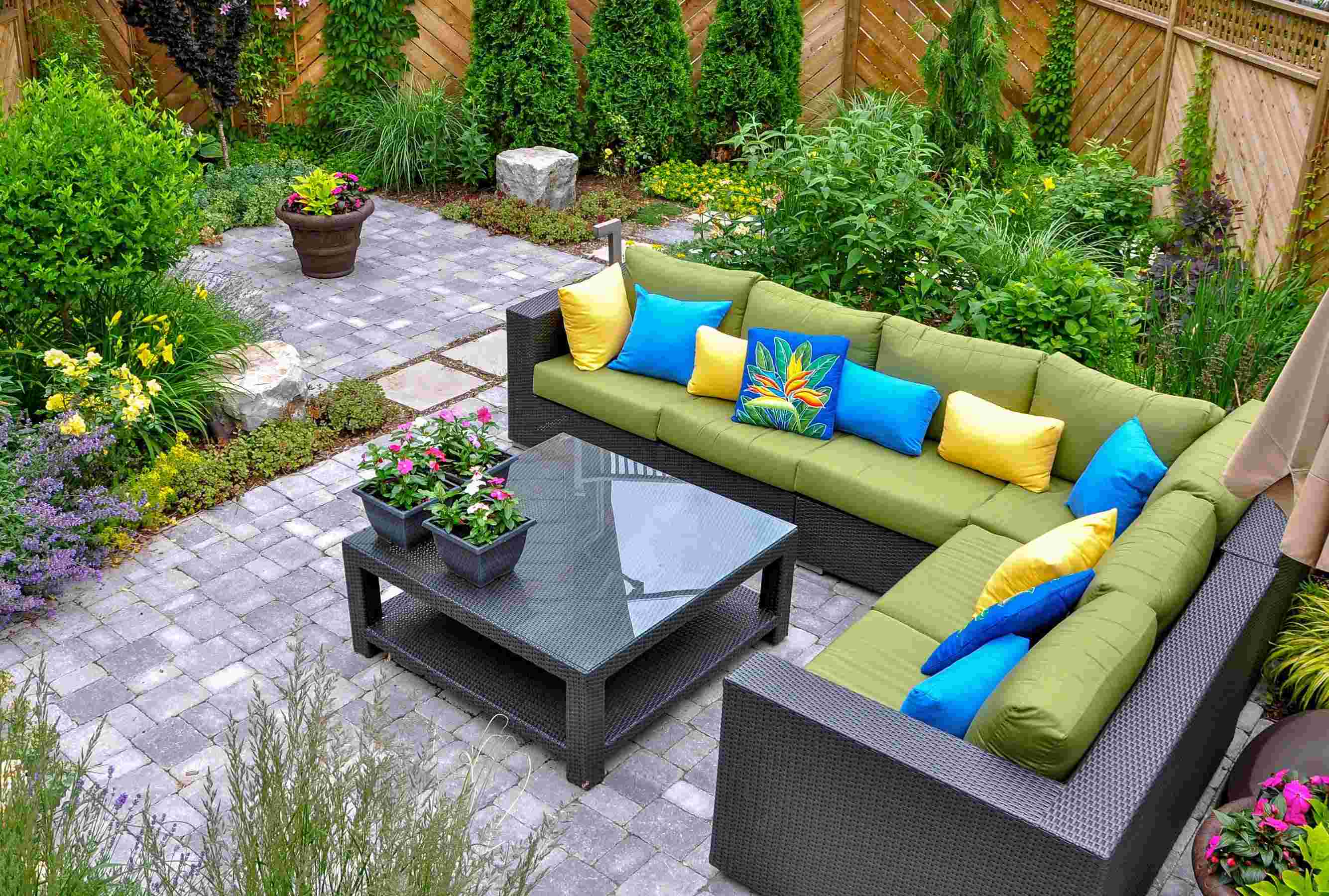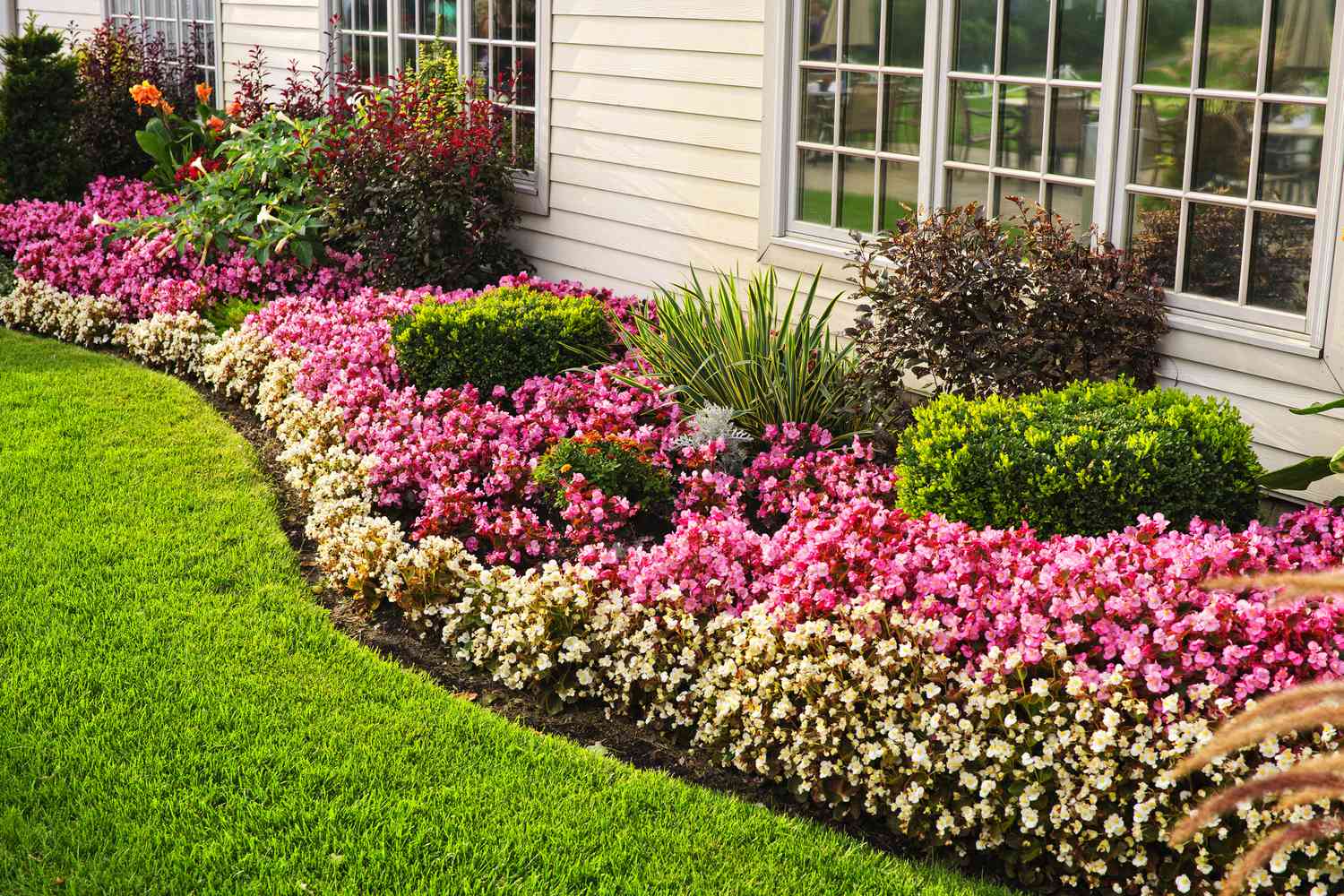Home>Garden Design>How To Landscape My Backyard
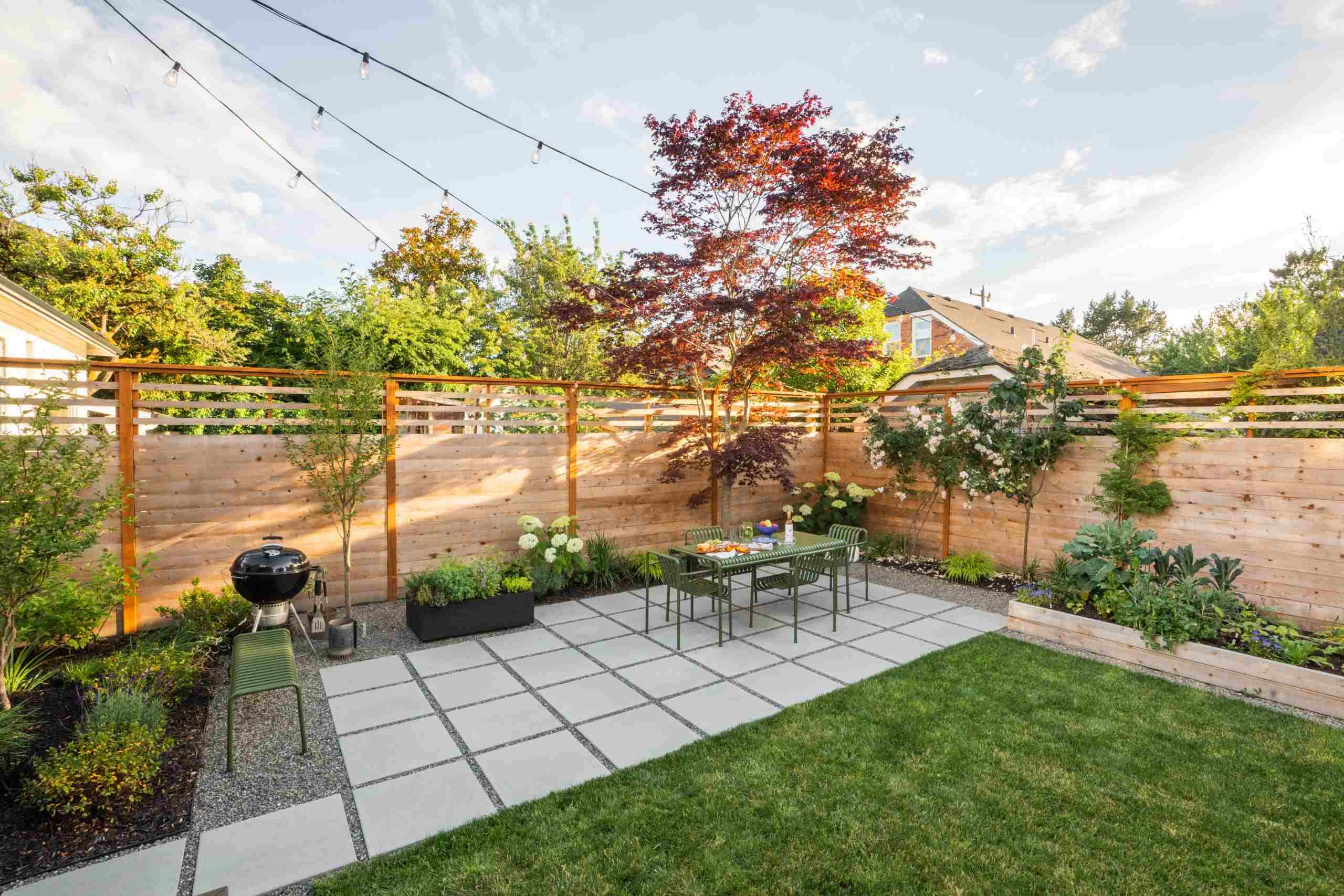

Garden Design
How To Landscape My Backyard
Published: August 5, 2023
Learn how to effectively landscape your backyard with our expert landscape design tips and ideas. Transform your outdoor space into a stunning oasis with our step-by-step guide.
(Many of the links in this article redirect to a specific reviewed product. Your purchase of these products through affiliate links helps to generate commission for Chicagolandgardening.com, at no extra cost. Learn more)
Table of Contents
Introduction
Welcome to the world of landscape design, where creativity meets nature to transform ordinary spaces into stunning outdoor retreats. Whether you have a small backyard or a spacious garden, landscaping allows you to create a visually appealing and functional outdoor haven that reflects your personal style and enhances the beauty of your home.
Landscaping not only adds value to your property but also provides numerous benefits. It creates a peaceful and inviting atmosphere, promotes relaxation and well-being, and allows you to connect with nature right outside your door. Whether you’re looking to create a serene oasis for yourself, a playful and safe space for your children, or an entertaining area for guests, landscaping offers endless possibilities.
But where do you begin? With so many options and considerations, starting the journey to landscape your backyard can feel overwhelming. That’s where this guide comes in to provide you with the knowledge and inspiration you need to transform your outdoor space.
In this comprehensive guide, we’ll walk you through the essential steps of landscape design, from assessing your space and setting goals to designing and implementing your vision. We’ll help you choose the right plants and materials, prepare the soil, install hardscape elements, and create a maintenance plan to ensure your garden thrives for years to come. By the end, you’ll have all the tools and confidence to create a backyard that is not only visually stunning but also functional and sustainable.
So, grab your notebook and gardening gloves, and let’s dive into the exciting world of landscape design. Get ready to transform your backyard into a personal oasis that will leave you and your guests in awe.
Assessing the Space
Before diving into the design process, it’s crucial to assess your outdoor space and understand its unique characteristics. By doing so, you can make informed decisions about the layout, functionality, and overall design of your backyard.
Begin by taking a careful look at the size and shape of your yard. Measure the dimensions and sketch a rough plan. Consider any existing features or structures such as trees, fences, or patios that you want to incorporate into your design. Take note of the direction of sunlight throughout the day to determine where shade and sunlight patterns fall.
Next, evaluate the current condition of your yard. Assess the soil quality, drainage issues, and any existing plant life or landscaping elements that may need to be removed or modified. Pay attention to any challenges or limitations your space may present, such as steep slopes, limited access, or proximity to neighboring properties.
Consider the specific needs and preferences of your household members. If you have pets or children, you might want to create designated areas for them to play or explore. If you enjoy entertaining, think about how you can incorporate seating areas or outdoor kitchen facilities into your design. Understanding how you and your family will use the space will help guide your design decisions.
Furthermore, take into account the overall style and aesthetic you want to achieve. Do you prefer a modern and minimalist design or a lush, tropical paradise? Consider whether you want your backyard to blend seamlessly with the surrounding environment or make a bold statement with contrasting elements.
By thoroughly assessing your space, you can lay the foundation for a well-thought-out landscape design that caters to your unique needs and maximizes the potential of your backyard. So, grab a notepad, take some measurements, and let’s move on to the next step.
Setting Goals and Designing
Once you have assessed your space, it’s time to set goals for your landscape design. Start by determining the primary purposes you want your backyard to serve. Are you looking to create a peaceful retreat for relaxation and meditation, or do you envision a vibrant space for hosting gatherings and socializing?
Consider the specific activities and features you want to incorporate into your design. Would you like a vegetable garden, a water feature, or a fire pit? Do you need space for outdoor dining or a play area for kids? Defining these goals will help you create a cohesive design that meets your needs.
With your goals in mind, it’s time to start designing. Grab a pen and paper or use software tools to sketch out your ideas. Consider the overall layout of your backyard, including pathways, seating areas, and focal points. Create zones within the space for different activities, such as a lounging area or a secluded corner for relaxation.
When designing your landscaping, think about the principles of balance, scale, and unity. Make sure to create a visual balance by distributing elements evenly throughout the space. Consider the scale of plants and hardscape features to ensure they are proportionate to the overall size of your backyard. And strive for unity by using similar materials, colors, or forms to create a cohesive and harmonious design.
Don’t be afraid to get creative and explore different design styles and themes. Research different landscaping ideas for inspiration or consult with a professional designer who can bring your vision to life. Remember, the design phase is your opportunity to unleash your creativity and create a backyard that truly reflects your personality and style.
As you finalize your design, consider the maintenance and sustainability factors. Choose plants that are suitable for your climate and require minimal upkeep. Opt for eco-friendly materials and consider incorporating sustainable features like rainwater harvesting or efficient irrigation systems.
By setting clear goals and designing a well-thought-out landscape, you are laying the groundwork for a beautiful and functional outdoor space. So let your imagination run wild, put those design skills to work, and let’s move on to the next step in creating your dream backyard.
Choosing Plants and Materials
One of the most exciting aspects of landscape design is selecting the plants and materials that will bring your vision to life. The choices you make will determine the overall aesthetics and functionality of your backyard, so it’s important to choose wisely.
Start by considering the climate and environmental conditions of your area. Research plants that are native or well-adapted to your region to ensure they thrive in your backyard. Native plants are not only easier to maintain but also provide valuable habitat for local wildlife.
Consider the purpose you want your plants to serve. Are you looking for show-stopping blooms, evergreen foliage, or a mix of both? Determine whether you want plants for shade, privacy, ground cover, or attracting pollinators. A balanced combination of trees, shrubs, perennials, and annuals can provide year-round interest and a variety of textures and colors.
When selecting materials for hardscaping, such as walkways, patios, or retaining walls, consider their durability, functionality, and aesthetic appeal. Choose materials that will withstand the elements and require minimal maintenance. Popular choices include natural stone, concrete pavers, and composite materials, each offering its own unique characteristics and style.
Consider the design principles discussed earlier and choose plants and materials that complement each other and create a cohesive look. Use contrasting colors, textures, and heights to create visual interest. For example, pairing bold foliage plants with delicate flowers can create a striking contrast.
Don’t forget about the practical considerations. Take into account the growth rate and mature size of plants to ensure they won’t outgrow their designated spaces. Consider the amount of sunlight and water your chosen plants require and ensure they are compatible with your soil conditions.
If you’re unsure about plant selections or need advice, consult with local nurseries or gardening professionals. They can provide guidance on suitable plants for your area and offer valuable tips on care and maintenance.
By thoughtfully choosing plants and materials, you can create a landscape that not only looks stunning but is also sustainable and functional. So, take your time, do your research, and get ready to bring your backyard to life with the perfect combination of plants and materials.
Preparing the Soil
Preparing the soil is a crucial step in creating a healthy and thriving landscape. It provides a solid foundation for your plants to grow and ensures they receive adequate nutrients and moisture.
Start by testing your soil to determine its composition and pH level. Soil testing kits are readily available at garden centers or you can send a sample to a professional lab for analysis. The results will help you understand if your soil lacks certain nutrients or if it is too acidic or alkaline.
Based on the soil test results, you may need to amend the soil to improve its quality. If your soil is lacking in nutrients, organic matter such as compost or well-rotted manure can be added to enrich it. Compost not only provides essential nutrients but also helps improve soil structure and drainage.
If your soil has a high clay content, adding coarse sand or perlite can help improve drainage and prevent waterlogging. On the other hand, if your soil is sandy and prone to drying out quickly, adding organic matter can help retain moisture and improve its ability to hold nutrients.
Before planting, it’s essential to prepare the soil by removing any weeds, rocks, or debris. Loosen the soil with a garden fork or tiller to ensure it is loose and aerated. This will allow the plant roots to penetrate the soil easily and encourage healthy growth.
Consider the specific requirements of the plants you have chosen and amend the soil accordingly. Some plants prefer well-drained soil, while others require more moisture-retentive conditions. Tailoring the soil preparation to the needs of your plants will greatly enhance their chances of success.
Remember that soil preparation is an ongoing process. Even after planting, continue to monitor the soil and make necessary amendments as the plants grow and evolve. Regularly adding organic matter, such as mulch, can help improve soil fertility and moisture retention.
By taking the time to properly prepare your soil, you are setting the stage for healthy and thriving plants. So roll up your sleeves, get your hands dirty, and let’s give those plants the perfect growing environment they deserve.
Installing Hardscape Elements
Hardscape elements are the non-living components of your landscape design that add structure, functionality, and visual appeal to your backyard. Installing these elements is an exciting phase of the landscaping process that can transform your space into an outdoor living area.
Start by planning the layout and placement of hardscape elements such as pathways, patios, decks, retaining walls, or water features. Consider how these elements will enhance the overall design and functionality of your backyard. Paths can guide visitors through your garden, patios can provide a space for outdoor dining or lounging, and retaining walls can create terraced areas for planting.
Once you have a clear plan, gather the necessary tools and materials. This may include shovels, wheelbarrows, levels, gravel, sand, stones, and appropriate adhesives or fasteners. Make sure you have measured and marked the areas where the hardscape elements will be installed to ensure accuracy during the installation process.
If you are installing a pathway, start by excavating the soil to the desired depth. This will depend on the type of pathway material you are using. Lay a base layer of gravel or sand to create a stable and level surface. Place the paving stones or other materials in the desired pattern, making sure they are secure and level.
For patios or decks, begin by preparing the ground and ensuring proper drainage. Construct a solid and level base using a combination of gravel, sand, and compacted soil. Install the flooring material, whether it’s concrete, wood, composite decking, or pavers, following the manufacturer’s instructions.
When installing retaining walls, start by digging a trench for the wall foundation. This should be deep enough to provide stability and prevent shifting. Lay a base layer of gravel or crushed stones and build the wall using the chosen materials, such as bricks, concrete blocks, or natural stone. Make sure each layer is level and secure, and consider using adhesive or mortar to enhance stability.
If you are incorporating water features, such as fountains or ponds, consult with a professional to ensure proper installation and plumbing. Consider the necessary safety measures and maintenance requirements for these elements.
Throughout the installation process, pay attention to detail and take the time to ensure the proper alignment, stability, and levelness of the hardscape elements. This will ensure a professional and visually appealing result.
Whether you choose to tackle the installation yourself or hire a professional, the hardscape elements are an integral part of your landscape design. They provide structure and functionality to your outdoor space, allowing you to fully enjoy and utilize your backyard.
Planting and Maintaining the Garden
Now that you have completed the hardscape installation, it’s time to bring your garden to life by planting the chosen plants and implementing a regular maintenance routine. Planting is both an art and a science, requiring attention to detail and proper care to ensure the long-term success of your landscape.
Start by carefully preparing the planting holes for each individual plant. Dig a hole that is slightly wider and deeper than the root ball or container. Gently remove the plant from its container, loosen the roots, and place it in the hole. Backfill with soil, firming it gently around the base of the plant.
Water all newly planted plants thoroughly to help establish the roots and ensure proper hydration. Consider the specific watering needs of each plant, taking into account factors such as soil type, sun exposure, and weather conditions. It’s best to water deeply and less frequently to encourage the roots to grow deeper and become more resilient.
Mulching is an essential step in maintaining your garden. Apply a layer of organic mulch around the plants, leaving a gap around the stem to prevent moisture buildup and potential rot. Mulch helps to conserve moisture, regulate soil temperature, suppress weed growth, and add organic matter to the soil as it breaks down over time.
Regular maintenance is key to keeping your garden looking its best. This includes tasks such as pruning, weeding, fertilizing, and pest control. Prune plants to maintain their shape, remove dead or diseased branches, and promote healthy growth. Stay on top of weed control to prevent them from competing with your plants for nutrients and water. Fertilize your plants according to their specific needs to provide essential nutrients for growth and blooming.
Monitor your garden for signs of pests or diseases and take appropriate measures to control and prevent them. This may involve using organic pest control methods or seeking professional advice if the infestation or disease is severe.
Regularly inspect your plants for any signs of stress, such as wilting, discoloration, or unusual growth patterns. Address any issues promptly to prevent further damage and maintain the overall health and beauty of your garden. Keep an eye out for invasive plants that may take over your garden and take steps to remove them if necessary.
Lastly, a well-maintained garden requires periodic evaluation and adjustments. As your plants grow and evolve, you may need to rearrange or remove certain plants to maintain balance and harmony in your design. Stay curious and open to experimenting with new plants or design elements to keep your garden fresh and exciting.
Planting and maintaining a garden is an ongoing process, but with regular care and attention, you can create a stunning and thriving landscape that brings you joy for years to come.
Adding Final Touches and Accessories
With the major elements of your backyard landscape in place, it’s time to add the finishing touches and accessories that will truly make your outdoor space feel like a personal oasis. These final details can elevate the overall design, add personality, and create a welcoming atmosphere.
Start by considering the lighting in your garden. Outdoor lighting not only enhances the beauty of your landscape but also extends the usability of your backyard into the evening hours. Install ambient lighting to create a warm and inviting ambiance, and consider task lighting for specific areas such as pathways or seating areas.
Next, focus on creating comfortable and inviting outdoor seating areas. Choose weather-resistant furniture that suits your style and needs. Whether it’s a cozy seating arrangement on the patio, a comfortable lounge area under a pergola, or a hammock nestled in a shaded corner, create spaces where you and your guests can relax and enjoy the beauty of your backyard.
Add pops of color and visual interest through decorative elements such as outdoor cushions, throw pillows, and rugs. Choose patterns and colors that complement your overall design and create a cohesive look.
Consider incorporating water features such as fountains or small ponds to create a soothing and tranquil atmosphere in your garden. The sound of flowing water adds a sense of serenity and can drown out unwanted noise from the surrounding environment.
Don’t forget about the power of plants and flowers in adding beauty and charm to your backyard. Add containers filled with blooming flowers to create focal points or hang baskets from pergolas or fences for a cascading effect. Incorporate vertical gardening with climbing plants or install trellises to add depth and visual interest.
Add personal touches through décor and accessories that reflect your taste and style. Hang artwork or mirrors on exterior walls to add a touch of whimsy. Consider installing bird feeders or birdbaths to attract birds and create a lively atmosphere. And don’t forget about adding a pop of personality with unique and eye-catching garden sculptures or ornaments.
Finally, take the time to maintain and care for these final touches and accessories. Regularly clean and inspect outdoor furniture, replace cushions if needed, and keep decorative elements free from dust and debris. This will ensure that your outdoor space remains inviting and welcoming at all times.
By adding these final touches and accessories, you can truly personalize your outdoor space and create a backyard retreat that reflects your style and provides a place for relaxation and enjoyment. So let your creativity shine and infuse your garden with the small details that bring it to life.
Conclusion
Congratulations! You have reached the end of our comprehensive guide to landscape design. By following the steps outlined in this guide, you now have the knowledge and tools to transform your backyard into a stunning and functional outdoor haven.
We started by assessing the space and understanding its unique characteristics. Then, we set goals and designed a landscape that met your specific needs and preferences. We chose the right plants and materials, prepared the soil, and installed the hardscape elements that added structure and functionality to your design.
With the foundation in place, we planted the chosen plants, implemented a maintenance routine, and added the final touches and accessories that truly brought your outdoor space to life. Throughout the process, we emphasized the importance of creativity, attention to detail, and regular maintenance to ensure the longevity and beauty of your landscape.
Remember, landscape design is not a one-time project but an ongoing journey. As your garden grows and evolves, you may need to make adjustments, try new plants or design elements, and continue to care for and maintain your outdoor space.
Creating a beautiful and functional backyard requires patience, creativity, and a love for nature. It is a process of trial and error, discovery and growth. So enjoy the journey and take pride in the transformation you have made.
We hope this guide has provided you with valuable insights, inspiration, and practical tips to help you create your dream backyard. We encourage you to continue exploring and learning about landscape design, as there are always new trends, plants, and techniques to discover.
Now, it’s time to grab that shovel, put on those gloves, and bring your vision to life. Whether you’re embarking on a small DIY project or working with professionals, remember that the end result will be a space that brings you joy, relaxation, and a deep connection with nature.
So go ahead, create your own outdoor oasis, and enjoy the beauty of your newly landscaped backyard.
